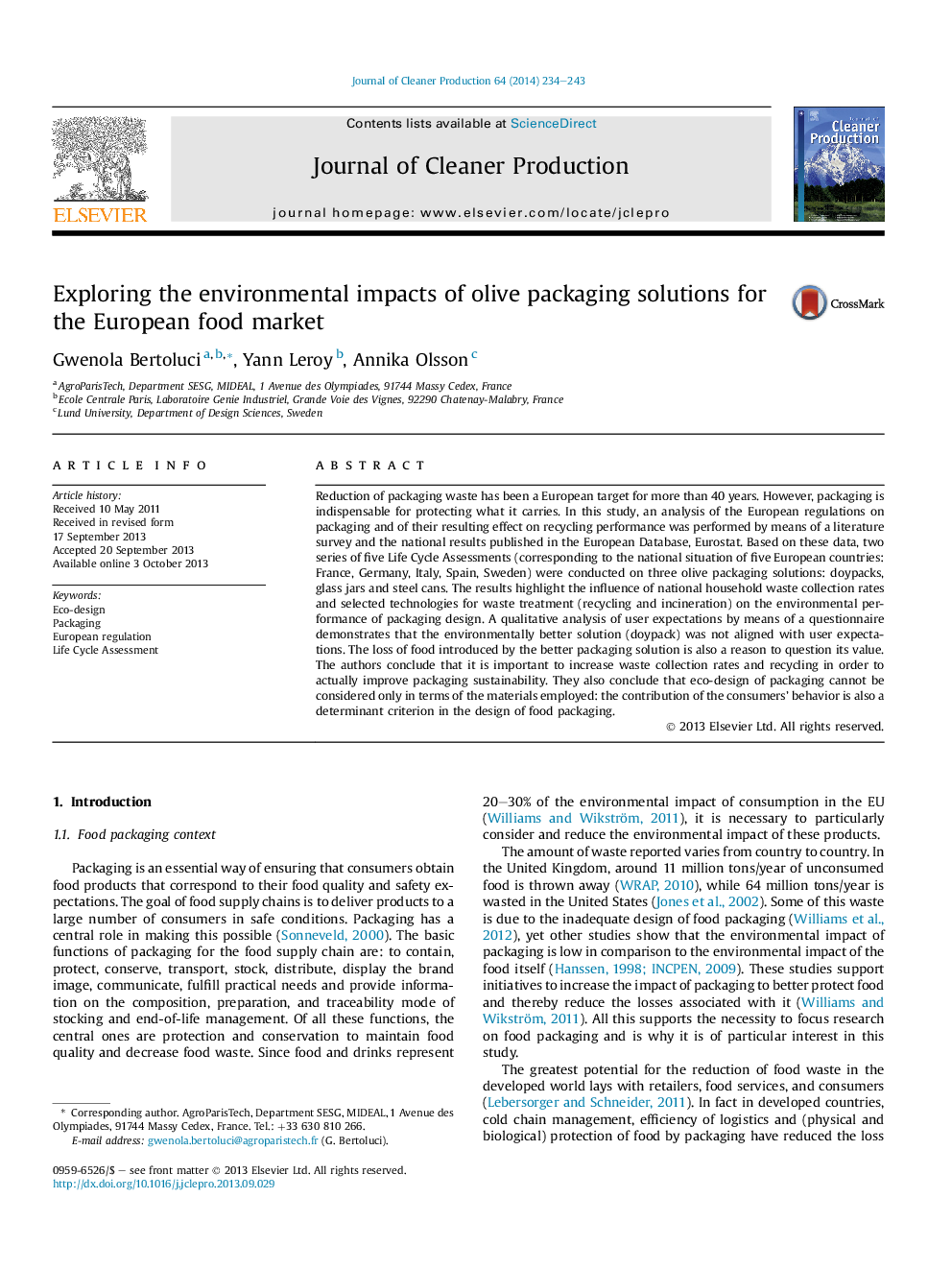| Article ID | Journal | Published Year | Pages | File Type |
|---|---|---|---|---|
| 8106960 | Journal of Cleaner Production | 2014 | 10 Pages |
Abstract
Reduction of packaging waste has been a European target for more than 40 years. However, packaging is indispensable for protecting what it carries. In this study, an analysis of the European regulations on packaging and of their resulting effect on recycling performance was performed by means of a literature survey and the national results published in the European Database, Eurostat. Based on these data, two series of five Life Cycle Assessments (corresponding to the national situation of five European countries: France, Germany, Italy, Spain, Sweden) were conducted on three olive packaging solutions: doypacks, glass jars and steel cans. The results highlight the influence of national household waste collection rates and selected technologies for waste treatment (recycling and incineration) on the environmental performance of packaging design. A qualitative analysis of user expectations by means of a questionnaire demonstrates that the environmentally better solution (doypack) was not aligned with user expectations. The loss of food introduced by the better packaging solution is also a reason to question its value. The authors conclude that it is important to increase waste collection rates and recycling in order to actually improve packaging sustainability. They also conclude that eco-design of packaging cannot be considered only in terms of the materials employed: the contribution of the consumers' behavior is also a determinant criterion in the design of food packaging.
Related Topics
Physical Sciences and Engineering
Energy
Renewable Energy, Sustainability and the Environment
Authors
Gwenola Bertoluci, Yann Leroy, Annika Olsson,
